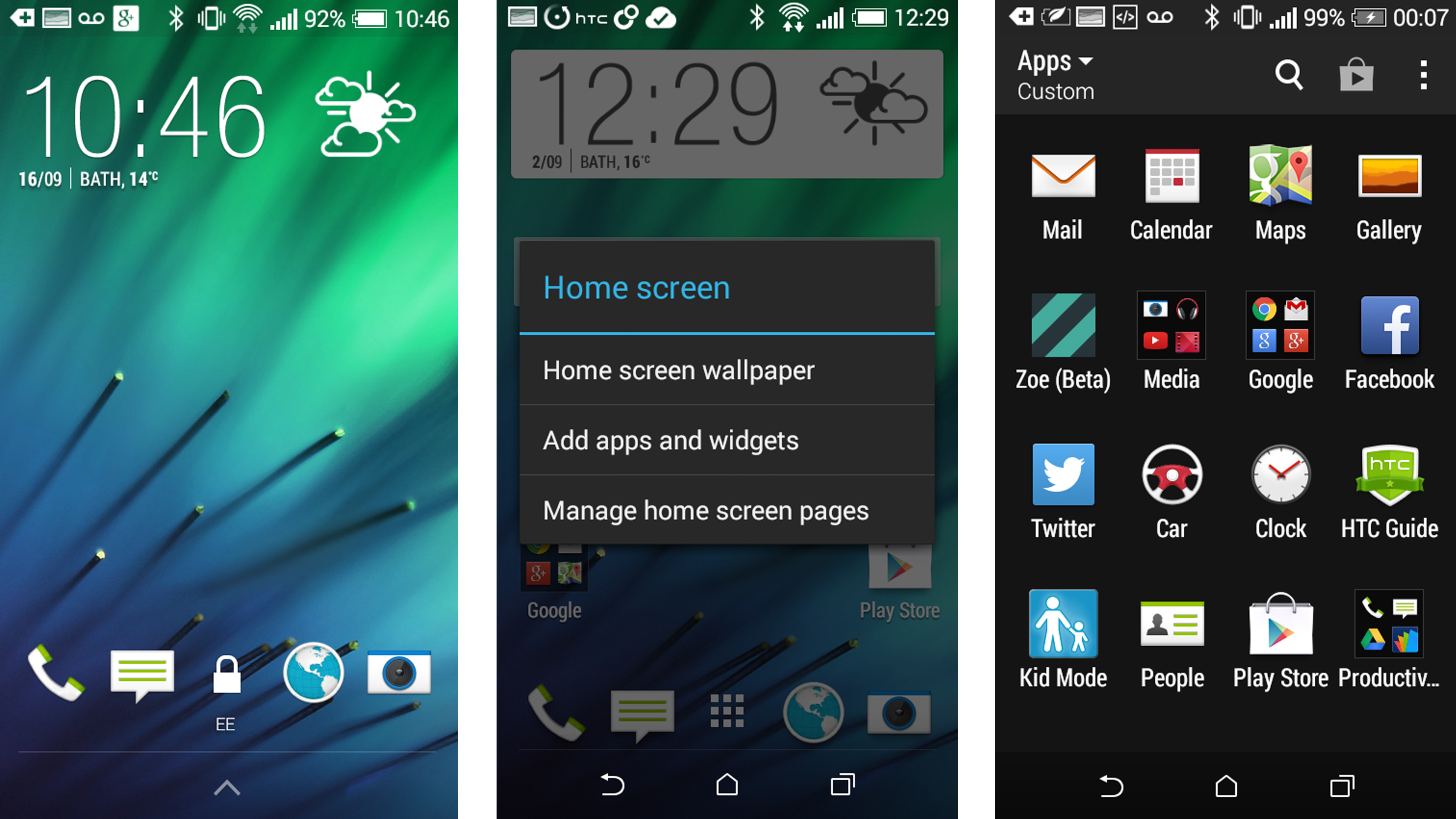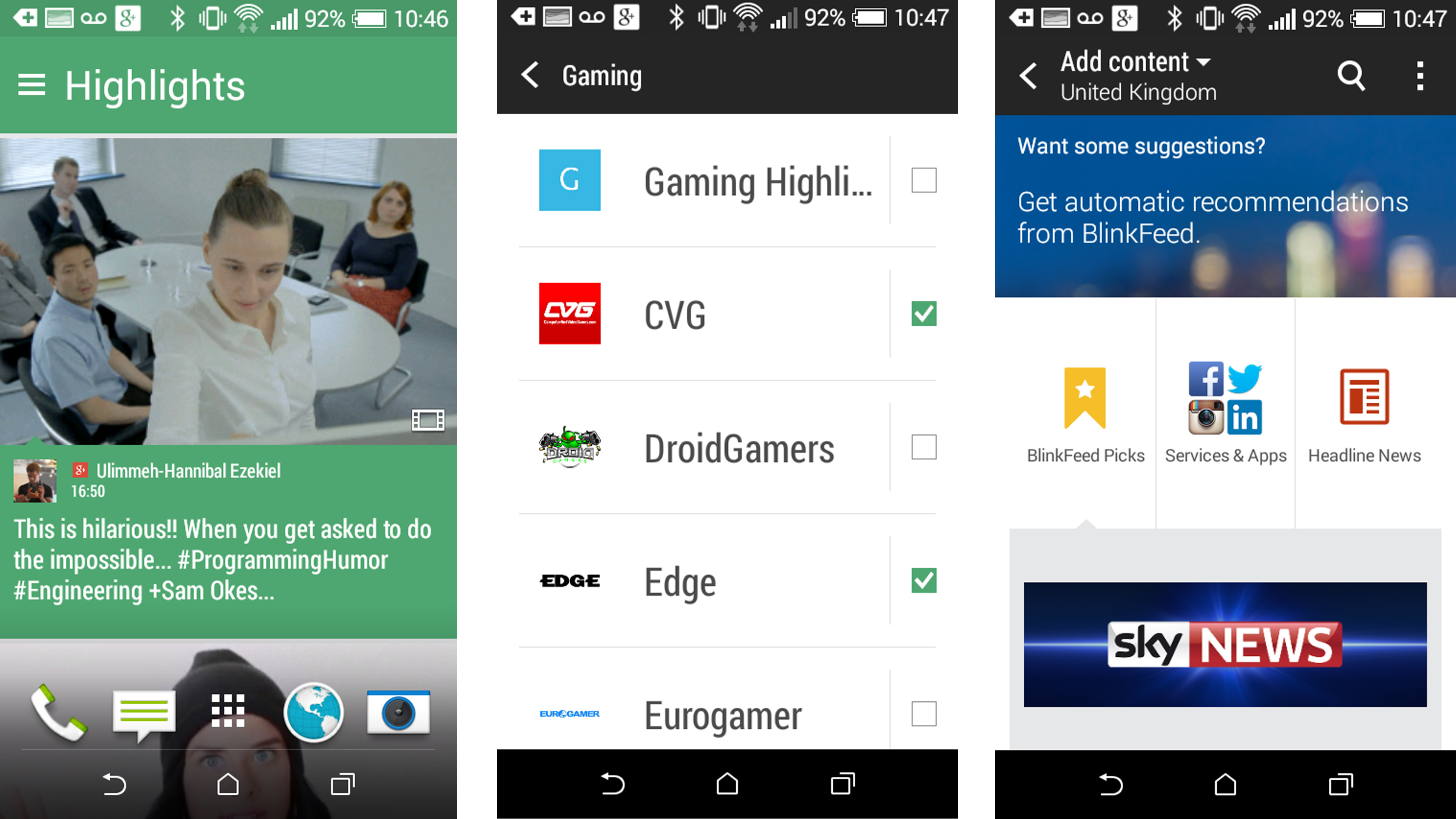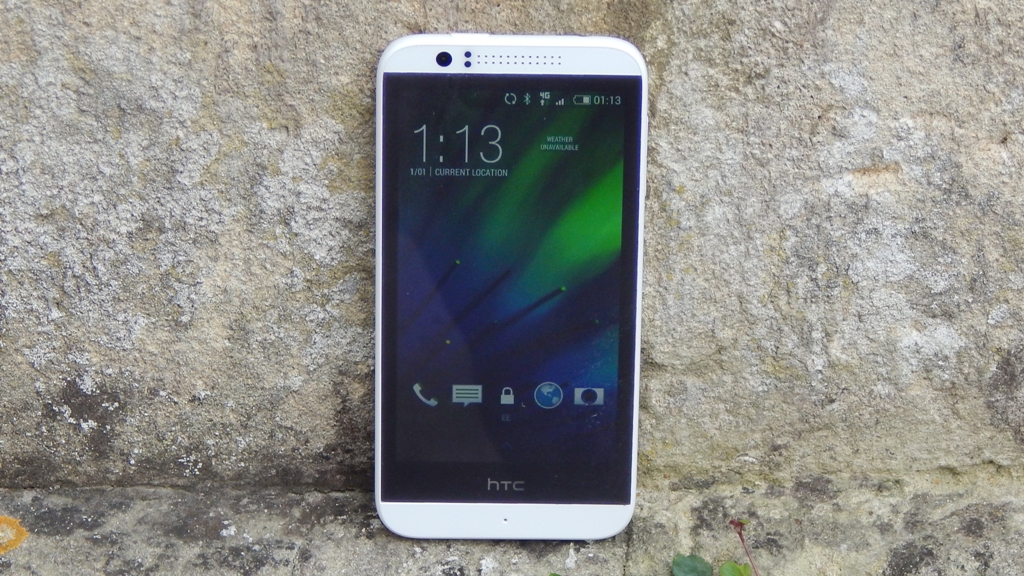Why you can trust TechRadar
The operating system installed on the HTC Desire 510 is Android 4.4.4, and comes with HTC's own software HTC Sense and HTC BlinkFeed preinstalled.
As with other HTC handsets such as the HTC One Mini 2 and the HTC One M8, the Android KitKat operating system has been overlaid with the HTC Sense interface. It's an attractive and intuitive design, though it may take a little getting used to if you're used to using the standard Android interface (or the likes of iOS or Windows Phone).
Many smartphone manufacturers have created their own Android interfaces to give their handsets a distinctive feel, such as Sony's Xperia overlay and Samsung's TouchWiz. HTC'S Sense user interface is probably the most popular, as it combines a simple, colourful and easy to use interface with some decent improvements over the standard Android interface.

Icons and apps are laid out well and are easy to find. In certain applications the tile-like design is certainly eye catching, if slightly reminiscent of Microsoft's Windows Phone 8 OS, and it looks particularly nice in the gallery app. Meanwhile, configuring the home screen through HTC Sense is quick and easy, allowing you to add or hide widgets.
Some of the big changes between HTC Sense and the stock Android interface include a revamped dial pad and contacts lists that make it simple and easy to call who you want quickly. The home screen is easy to customise and contains four icons along the bottom that offer quick access to the phone, text messages, internet and camera tools.
These quick shortcuts can be easily changed and replaced with your favourite apps. HTC took a "if it isn't broke, don't fix it" approach to the notification drawer, keeping it mainly the same as with the stock Android, but with a few tweaks to make it fit in with the rest of HTC Sense.
The HTC Blinkfeed app that comes preinstalled is a handy tool that collates news from a large number of sources on the internet and presents them in an attractive tiled layout that fits in well with the HTC Sense aesthetics.
Mixing breaking news from websites such as The Guardian, ESPN, MTV and Vice and news feeds from your social media networks such as Facebook and Twitter gives you a handy overview of what's happening on the internet, and can be quickly viewed by swiping left from the home screen.

While it does a good job of providing you news from around the internet, it isn't immediately obvious how to configure HTC Blinkfeed to only show you news from the sources you want to see.
The HTC Backup tool is also included with the HTC Desire 510. This saves settings, passwords and user account information, bookmarks, messages, contacts, and apps which can then be restored if anything happens to the phone. It's a simple program to use, which quietly backs up your data in the background.
A feature I rather liked about the HTC Backup tool is that it will automatically back up your stuff every day, and it will only do that if the HTC Desire 510 is connected to the internet via WiFi, so you don't have to worry about using up your mobile data allowance.
Performance
High speed for a low price is the theme of the HTC Desire 510 and this doesn't just refer to the connection speeds. The HTC comes with the new Qualcomm Snapdragon 410 quad speed processor that's clocked at 1.2GHz.
This is an extremely proficient mobile CPU, and makes navigating the operating system and opening and using apps incredibly fast and smooth. The processing power behind the HTC Desire 510 leads to an impressively responsive user interface that feels great to use.
The HTC Desire 510 comes with 1GB of RAM, which is the same as the EE Kestrel. The lower resolution of the screen helps to prevent the HTC Desire 510 from being put under too much stress.
While the HTC Desire 510 keeps things generally nice and speedy, things begin to slow down when using a lot of apps at once, especially if you're also browsing the internet with lots of tabs open.
In the Geekbench 3 benchmark tests we ran, the HTC Desire 510 scored 1330, which is very respectable for this price range. The EE Kestral, its closest competitor, managed only 1190, proving that the new Qualcomm Snapdragon 410 quad speed processor in the HTC Desire 510 is pulling its weight.
Current page: Interface and performance
Prev Page Key features Next Page Battery life and the essentials
Matt is TechRadar's Managing Editor for Core Tech, looking after computing and mobile technology. Having written for a number of publications such as PC Plus, PC Format, T3 and Linux Format, there's no aspect of technology that Matt isn't passionate about, especially computing and PC gaming. He’s personally reviewed and used most of the laptops in our best laptops guide - and since joining TechRadar in 2014, he's reviewed over 250 laptops and computing accessories personally.
